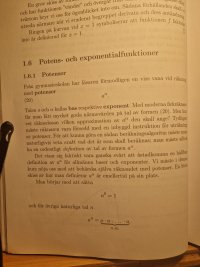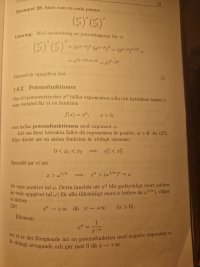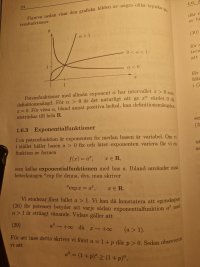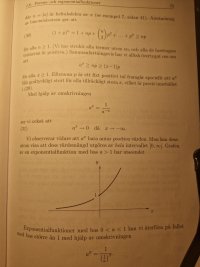The only Swedish I remember from my one week in the country decades ago is that all
street names end with gatan'', but here are my two öre's worth:
First, replace (26) with an equivalent statement,
a>1∧γ>0⟹aγ>1.
My logic is a little rusty, I think your statement is equivalent, for if we substitute
α=0 and
β=γ in (26) then clearly
aγ>1. For the second direction, let
a>1 and assume
aγ>1 holds for
γ>0. Now suppose
α<β, then
β−α>0 and by the properties of the exponents
aβ=aα⋅aβ−αSince
β−α>0, it follows from our assumption that
aβ−α>1 and therefore
aβ=aα⋅aβ−α>aα⋅1=aα
Hence they are logically equivalent statements.
Now, prove for arbitrary natural numbers
p,q
a>1⟹ap>1a<1⟹aq<1
These two statements I managed to prove easily using induction
Suppose
a>1. Then for
p=1 we have
ap=a. Since
a>1 the base case follows. Suppose for induction that
ak>1. Then
ak+1=ak⋅a. But we know by the induction hypothesis that
ak>1 and
a>1,
ak+1=ak⋅a>1⋅1=1. Hence
ak+1>1.
I used a similar argument to show the second statement.
a>1⟹aqp>1
I found this part challenging and unsure if my argument was valid.
Suppose
a>1and let
q>0 be some whole-number. The rational exponent
qp for base
a can be expressed as
aqp=(ap)q1
Now
ap>1 as we have already proven this. Suppose
x=ap, then we need to prove that if
x>1 then
xq1>1. The
q-th root is defined as the unique real number
y that solves the equation.
yq=x
If
x>1 then
yq=x>1. And our goal is to show that
y>1. Assume for contradiction that
y≤1. If
y=1,yq=1q=1, which contradicts the assumption
yq>1, suppose
y<1, since
q is a natural number,
yq<1q (by previous theorem) which also contradicts that
yq=x>1, therefore
y>1.
This proves that if
a>1, then
aqp>1
Then use the definition of
aγ for arbitrary
γ's through approximations of
γ with rational numbers.
Does this help?
Since any real number
γ can be approximated to any degree of accuracy with a fraction
p/q, the property
aqp holds for
a>1 and rational
p/q, it must hold for
a>1 and real
γ by the continuity of the exponential function.
What do you think about my attempt to use your suggestion blamocur?







